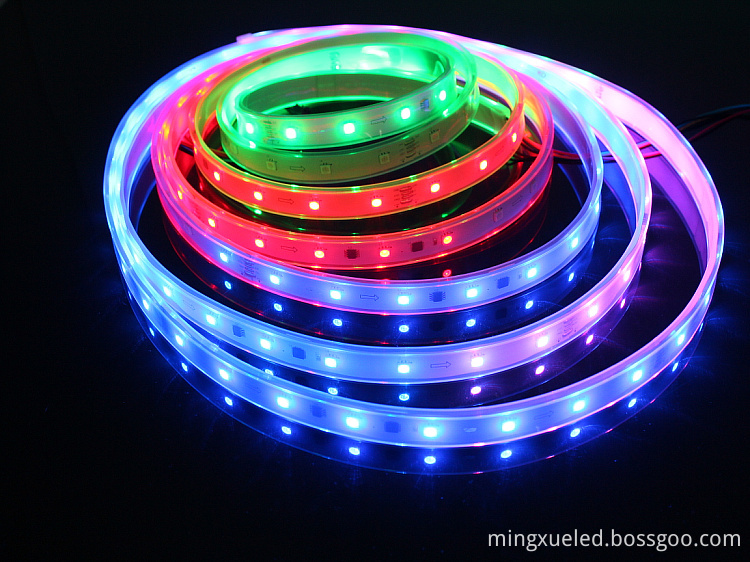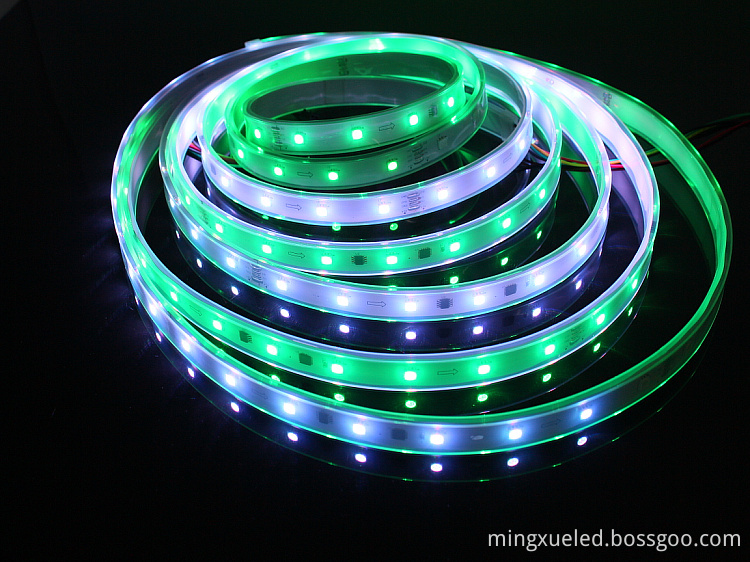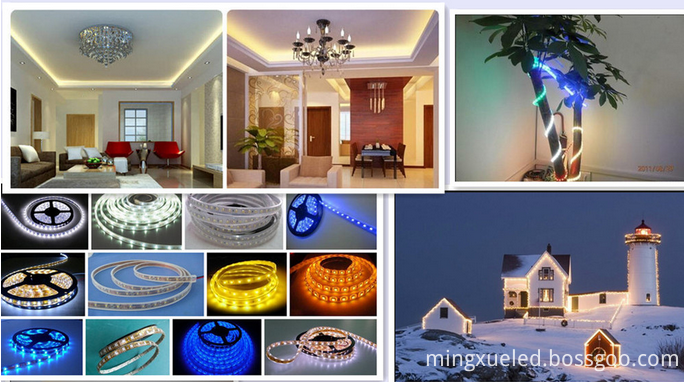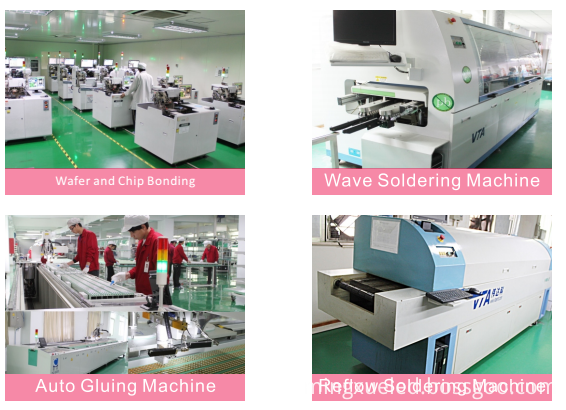The surface of the photosensitive member on the CCD has the ability to store charge and is arranged in a matrix manner. When the surface feels light, it will reflect the charge on the component. The signals generated by all the photosensitive components on the entire CCD form a complete picture.
If you break down the CCD, you will find that the structure of the CCD is three layers, the first layer is the "micro lens", the second layer is the "color separation filter" and the third layer "photosensitive layer."
The first layer of "micro lens"
We know that the key to digital camera imaging lies in its photosensitive layer. In order to expand the CCD's lighting rate, it is necessary to expand the light receiving area of ​​a single pixel. However, improving the lighting rate also tends to degrade the picture quality. This layer of "micro lens" is equivalent to a pair of glasses in front of the photosensitive layer. Therefore, the photosensitive area is no longer determined by the open area of ​​the sensor, but is instead determined by the surface area of ​​the microlens.
The second layer is the "color separation filter"
The second layer of the CCD is the “color separation filterâ€. There are currently two color separation methods, one is the RGB primary color separation method, and the other is the CMYK complementary color separation method, which has its own advantages and disadvantages. First of all, let's first understand the concept of the two color separation methods. RGB is the three primary color separation method. Almost all colors that human glasses can recognize can be composed of red, green, and blue. The three letters of RGB are Red, respectively. Green and Blue, which shows that the RGB color separation method is adjusted by the color of these three channels. Besides CMYK, this is a combination of four channels of color, they are blue (C), magenta (M), yellow (Y), black (K). In the printing industry, CMYK is more suitable, but its adjusted color is not as high as that of RGB.
The advantages of primary color CCDs are sharp picture quality and true colors, but the disadvantage is noise. Therefore, we can note that digital cameras using color CCDs generally do not exceed 400 in ISO sensitivity. In contrast, the complementary color CCD has a Y yellow filter, which is more careful in the resolution of the color, but at the expense of the resolution of some images. On the ISO value, the complementary color CCD can tolerate higher sensitivity, generally Can be set at 800 or above. Third layer: The third layer of the photosensitive layer CCD is the “photosensitive film.†This layer is mainly responsible for converting the light source that passes through the filter layer into an electronic signal and transmitting the signal to the image processing chip. reduction.
The traditional camera film size is 35mm, 35mm diagonal length, 35mm film photosensitive area of ​​36 x 24mm. Converted to a digital camera with a diagonal length of approximately 35mm, the larger the CCD/CMOS size. In SLR digital cameras, many have CCD/CMOS sizes close to 35mm, such as the Nikon D100, CCD/CMOS size area of ​​23.7 x 15.6, much larger than consumer digital cameras, and Canon's EOS-1Ds CMOS The size is 36 x 24mm, reaching an area of ​​35mm, so imaging is also relatively good.
The consumer digital cameras on the market today are mainly 2/3 inch, 1/1.8 inch, 1/2.7 inch and 1/3.2 inch. The larger the CCD/CMOS size, the larger the photosensitive area and the better the imaging effect. The 1/1.8-inch 3-megapixel camera usually outperforms the 1/2.7-inch 4-megapixel camera (the latter's photosensitive area is only 55% of the former). The increase in the same size of CCD/CMOS pixels is certainly a good thing, but it also leads to a reduction in the photosensitive area of ​​a single pixel, and there is a possibility of underexposure. However, if you want to maintain the existing image quality while increasing CCD/CMOS pixels, you must increase the total area of ​​the CCD/CMOS without reducing the area of ​​a single pixel. At present, larger CCD/CMOS processing and manufacturing are more difficult and the cost is very high. Therefore, the digital camera with a larger CCD/CMOS size has a higher price. The size of the photosensitive device directly affects the volumetric weight of the digital camera. Ultra-thin, ultra-light digital cameras generally have small CCD/CMOS sizes, and the more professional digital cameras, the larger the CCD/CMOS size.
Constant current strip/IC flexible strip/IC Constant Current Led Strip Light also known as led IC digital lights and other terminologies, the product is constant current IC single point of control, the selection of wafer 5050RGB SMD LED beads, placement in FPCB (flexible printed circuit board), the folding pliable waterproof rating to IP68, length of 5 meters per roll, light bar with 3M adhesive tape or snap screws, Ic Constant Current Led Strip Light used low-voltage DC power supply safe and convenient, light color colorful.


IC Constant Current Led Strip Light flexible substrate FPC is soldered LED, and a peripheral circuit is formed, can chase,
Running water, Symphony, display and so on. Mainly used in KTV, hotel, home decoration.
IC Constant Current LED Strip Light, usually WS2801, WS2811, TLS3001, TM1809, TM1812, LPD8806, LPD6803, TM1903, DMX512, UCS256 control IC and other ways changes.
LED use is generally 5050RGB package 3528RGB package two.
Product operating voltage is generally DC12V and DC5V two kinds of more.
IC Constant Current Led Strip Light Lifespan:
Theoretically 100000H, but different ambient temperature and humidity, resulting in the product life and no practical application 100000H; good selection of LED light strip Symphony, per thousand hours of light fades only about a few percent, and almost you can reach three percent forty big gap. Mainly to see the manufacturer of the product quality control.
According to the product environment is generally divided into paste with 3M glue and fixing clips and screws in two ways.
We focus on LED area, is a high-tech lighting enterprise deal in develop, produce and sales.
IC Constant Current Led Strip Light, applications:

Owns DIP LED,SMD LED professional production lines and LED lighting products lines, For IC Constant Current Led Strip Light, the produce volume per month for DIP LED,SMD LED is 50 million pieces, for LED flexible strip light is 500 thousands meters, for LED flexible strip light for car is about 200 thousands pairs, for LED tube light is 50 thousands pieces, for LED Spotlights are 200 thousands pieces, for LED ceiling light are 50 thousands pieces.
Mingxue Optoelectronics Co.,Ltd. has apply the I S O 9 0 0 1: 2 0 0 8 international quality management system certificate, For IC Constant Current Led Strip Light, we apply the CE, RoHS and SAA certificate for our led lighting product.
Our R & D team can handle highly customized designs and offer OEM and ODM services.
We hope to set up a long-term partnership with you through our high quality products and our Sincere Service!


IC Constant Current Led Strip Light
Ic Constant Current Led Strip Light,Thin Led Strip Lights,24V Led Strip Light,Design Led Strip Light
Shenzhen Mingxue Optoelectronics CO.,Ltd , http://www.mingxueled.com